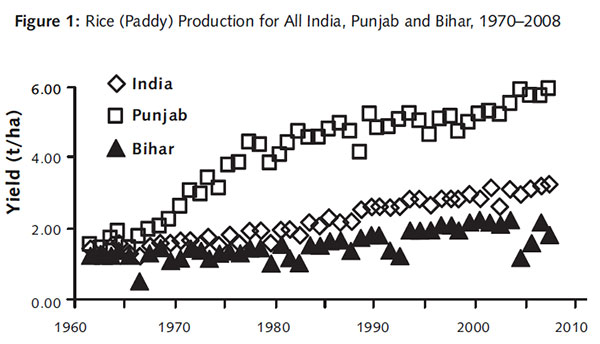Can Agriculture Provide Food Security and Decent Livelihoods in East India?
Efficient use of water and land, including the storing of excess run-off and the cultivation of alternative crops to lowland rice such as vegetables and pulses, are some of the ways to ensure food security and decent livelihoods for the subsistence farmers in the East India Plateau.
T he Green Revolution brought food security to India mainly by increased productivity through irrigated agriculture. In Punjab, the average rice yields have increased three-fold since the 1960s (Figure 1). Sadly, productivity has improved little in parts of India where agriculture is mostly rain-fed. In Bihar, for example, rice yields for predominantly subsistence farmers have barely improved in 50 years (Figure 1). Therefore, despite the national food security, East India suffers from a severe food deficit and is the most densely populated, least developed and poorest region of India, with around 70 per cent of the people not enjoying food security at all. For subsistence farmers, who use no irrigation methods and who depend on rainfall, drought is also an ever-present risk. This is despite having an average rainfall that is so high it is the envy of farmers elsewhere in India. Does it need to stay this way?


